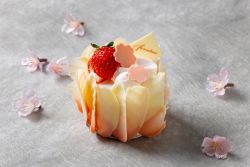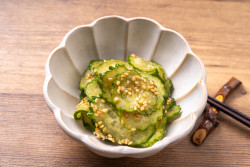
November 13, 2017
The (re)evolution of Harajuku
When I first arrived in Tokyo, in the early noughties, Harajuku street fashion was still, pretty much, in full swing. The gothic lolitas and weekend cosplayers were in abundance, the backstreet b-boys and girls owned the night, the dark-faced ganguro girls still flounced around between Shibuya and Harajuku like a rare breed of butterfly and […]
By Paul McInnes
When I first arrived in Tokyo, in the early noughties, Harajuku street fashion was still, pretty much, in full swing. The gothic lolitas and weekend cosplayers were in abundance, the backstreet b-boys and girls owned the night, the dark-faced ganguro girls still flounced around between Shibuya and Harajuku like a rare breed of butterfly and the gyaru were everywhere taking style notes from pop stars Namie Amuro and Ayumi Hamasaki.
Harajuku and Urahara (the backstreets) were vibrant and incandescent with creativity. Harajuku’s excess of independent boutiques and vintage stores even spilled onto the Zelkova tree-lined Omotesando Boulevard. This was in the final days of the legendary Dojunkai apartments, which were used as artist studios and sadly demolished to make way for the soulless Omotesando Hills.
In recent years a lot has been said about the demise and “death” of Harajuku. International media made a lot of (ill-informed) judgments about the Uniqlo- and tourist-infested area once known as the birthplace of legendary streetwear brands BAPE, Undercover, Bounty Hunter and Neighborhood.
A few years after my arrival, Harajuku and Omotesando had metamorphosed into their next phase, which sadly incorporated high fashion and major, global fast fashion brands. H&M set up shop next to Laforet and Omotesando initiated a kind of retail version of ethnic cleansing. As tourism opened up and Japan experienced the full head-bursting effects of globalization, Takeshita-dori became a soul-sapping tourist trap choc-a-bloc with convenience stores, 100 yen shops and all the mediocrity which comes with fast food.
Running parallel to this trend was the natural demise of several fashion subcultures. Gone were the lolitas, decora, visual-kei and dolly-kei tribes, and lo and behold, suddenly, according to lots of foreign press, Harajuku was officially dead. City leaders should have just stuck a cutesy 6%DOKIDOKI toe tag on the Takeshita-dori banner.
The truth, however, is much more complex than this. Subcultural fashion changes, very much like mainstream style, and many of the well-publicized tribes came to a natural and organic end. Nothing lasts forever. Much like a butterfly, fashion, especially in Harajuku and Shibuya, evolves and new energy and bursts of creativity begin.
Check out TokyoFashion.com — an absolute belter of a website which updates daily and is a truthful and accurate reflection of what’s actually going on in the area. In a recent article on its Medium page it says, “Harajuku is not a specific style or look — it is a special zone of creativity. Harajuku is a neighborhood where people — many of them future Japanese creative leaders — come to experiment with fashion without being judged or discouraged; where they instead feel encouraged to test original aesthetic concepts and theories, getting instant feedback from their peers and strangers. At its core, Harajuku is an open-air laboratory for new visual ideas. As long as it continues to attract and nurture creative young people, Harajuku remains very much alive.”
Harajuku, then, is ostensibly a microcosm of the capital city as a whole. Ever evolving and protean, it’s never a city to rest on its laurels. Namie Amuro may have hung up her singing boots and Ayumi Hamasaki has gone AWOL from the charts alongside a conspicuous absence of ’90s fashion subcultures, and the Harajuku that we all know and love from publications such as FRUiTS and websites such as Japanese Streets is no longer. In its place, however, is a contemporary Harajuku bustling with new fashion tribes and musicians and teeming with energy. Harajuku is not dead. It’s just putting on a new mask and new gladrags to go with it.







